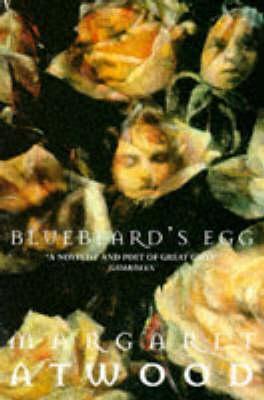
The Edible Woman
Book Description
When a woman begins to feel consumed by the very life she’s crafted, strange cravings take hold of her psyche. Ambitious and bright, Marian McAlpin finds herself trapped in the confines of societal expectations and a stifling relationship. As her desires clash with reality, she enters a surreal world where food symbolizes both freedom and entrapment. Relationships unravel, intimacy twists into a haunting metaphor, and the fight for self-identity becomes a gripping battle. Will Marian reclaim her autonomy, or will she be devoured by a life not of her choosing? In a world that feasts on conformity, how can one woman escape?
Quick Book Summary
"The Edible Woman" by Margaret Atwood explores the disintegration of Marian McAlpin's sense of self as she struggles to conform to societal and gender expectations in mid-20th-century Canada. Engaged to the stable but stifling Peter, Marian begins to feel literally consumed by her life, losing her appetite and developing aversions to food. These eating difficulties become a powerful metaphor for her internalized anxieties and loss of autonomy. Through relationships with her eccentric roommate Ainsley, jilted friend Clara, and mysterious Duncan, Marian navigates a surreal psychological landscape. Atwood skillfully uses food symbolism and surrealism to examine themes of identity, autonomy, and the pressures of conformity, culminating in Marian’s reclaiming of selfhood.
Summary of Key Ideas
Table of Contents
Identity and Self-Consumption
Marian McAlpin, an unassuming woman working at a market research firm, appears to lead a conventional life. She is engaged to Peter, a young lawyer fitting societal ideals, but beneath her composed exterior, Marian is increasingly uneasy about her relationship and future. Through her interactions with her roommate Ainsley, who is determined to have a child on her own terms, and her friend Clara, who is overwhelmed by motherhood, Marian is confronted with conflicting models of womanhood. These relationships highlight her own ambivalence about marriage, female identity, and the loss of self.
Gender Roles and Societal Expectations
As Marian’s wedding approaches, she begins to experience a physical and psychological aversion to food—first meat, then eggs, and gradually all sustenance. This eating disorder becomes a vivid metaphor for her feelings of being consumed by the roles imposed on her. Food transforms into a battleground for control, where Marian’s reluctance to eat reflects her subconscious resistance to being digested by societal norms and expectations, especially those surrounding womanhood, marriage, and submission.
Food as Symbolism for Control and Freedom
The novel’s surreal elements intensify as Marian severs herself from her body and desires. She becomes increasingly detached, observing her life as if she were an outsider, and drawn toward Duncan, a disaffected graduate student. Duncan represents escape and ambiguity, challenging Marian’s sense of self but also mirroring her own internal confusion. These psychological shifts reach a climax in a party scene, where Marian’s awareness of the absurdity of her predicament, and the people around her, heightens her sense of alienation.
Surrealism and Psychological Disintegration
Culminating in her symbolic act of baking a woman-shaped cake, Marian externalizes her terror at being consumed—both literally and figuratively—by those around her. She offers the cake to Peter, daring him to eat it and, by extension, to consume her. When he refuses, Marian reclaims the cake and her own autonomy, finally able to eat again. This act marks the transformation from passive object to active subject and signifies a new, though uncertain, independence.
Personal Reclamation and Autonomy
Atwood deftly weaves feminist critique and psychological insight throughout the novel, highlighting the pervasive pressures women face and the necessity of forging one’s own identity. "The Edible Woman" ends not with triumphant certainty but with Marian’s recognition of herself as a whole person, capable of making choices beyond the constraints that once threatened to devour her. The novel remains a resonant exploration of gender, conformity, and the quest for selfhood.
Download This Summary
Get a free PDF of this summary instantly — no email required.





